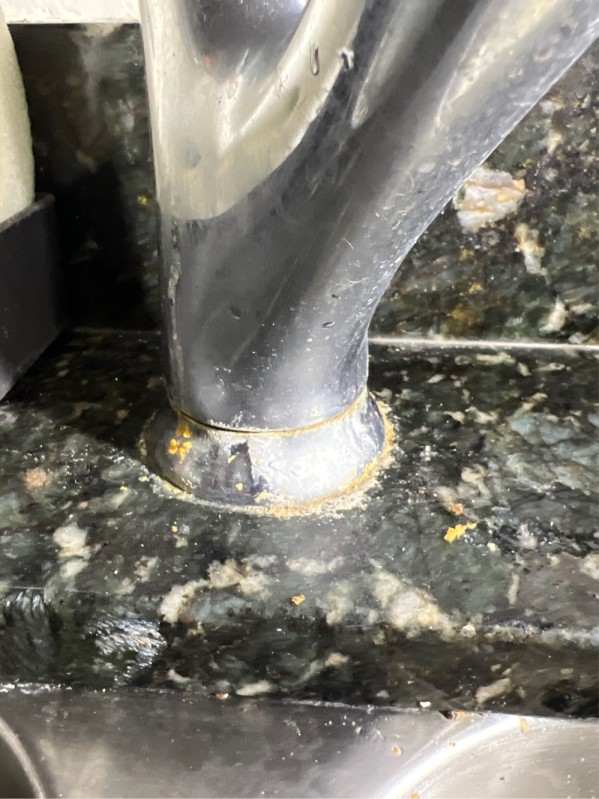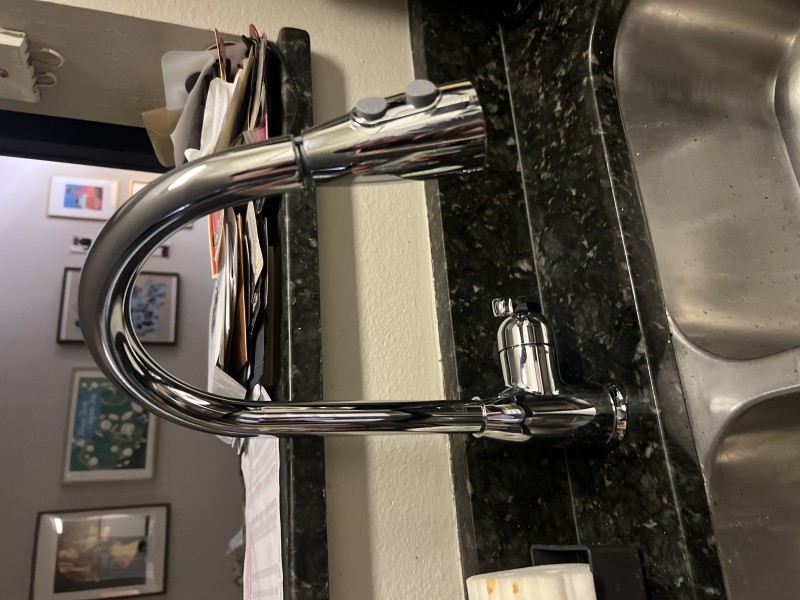Kitchen Faucet Replacement — Tampa, FL (Completed October 2025)
For this service call, the homeowner reported a persistent drip and inconsistent flow at the kitchen sink. We diagnosed worn internal components and mineral buildup, then recommended a reliable, economy-style faucet to restore water pressure, improve efficiency, and prevent under-sink leaks. Our process followed best-practice plumbing standards to ensure clean workmanship and code-compliant connections.
We began by shutting off the angle stop valves, verifying the main water supply was isolated, and protecting the cabinet base. Using a basin wrench, adjustable wrench, and a flashlight inspection mirror, we removed the old fixture and cleaned the sink deck. The escutcheon area was prepped for a watertight seal using plumber’s putty where appropriate, and all threaded connections received fresh PTFE (Teflon) tape to guard against seepage.
After setting the new economy kitchen faucet, we secured the mounting hardware, connected braided stainless-steel supply lines, and verified proper hot/cold orientation. Each compression fitting was brought to torque spec, and we performed a full leak test while monitoring the P-trap, supply stops, and risers. Final checks included aerator flushing for debris, cartridge function, and a balanced flow rate at typical working pressure.
This type of kitchen faucet upgrade delivers immediate benefits: quieter operation, improved water flow, and reduced risk of hidden cabinet damage from slow leaks. Whether it’s faucet replacement, shutoff valve repair, garbage disposal hookups, or re-sealing a sink, professional installation ensures durable connections, corrosion resistance, and long-term performance.

Final Install & Leak Test
In this photo, I’m completing the kitchen faucet installation and performing a final leak test. The escutcheon is seated for a watertight seal with plumber’s putty, and the spout has been flushed at the aerator to clear debris. With PTFE tape on critical threads and correctly torqued mounting hardware, the faucet delivers smooth, balanced water flow.
Tools and practices shown: basin wrench for tight clearances, adjustable wrench for compression fittings, and visual inspection of the P-trap and angle stop valves. Result: code-compliant connections, no under-sink seepage, and restored water pressure.

Under-Sink Connections & Prep
Here you can see the under-sink plumbing after the swap: braided stainless supply lines, clean compression fittings, and properly oriented shutoff valves. I prepped the sink deck, aligned the supply risers, and ensured the bracket sits level to prevent vibration or loosening.
Protecting threads with Teflon tape and confirming hot/cold orientation reduces the risk of micro-leaks and improves long-term durability. A quick pressure test verified drip-free performance, and the faucet’s cartridge cycles smoothly for everyday dishwashing and food prep.